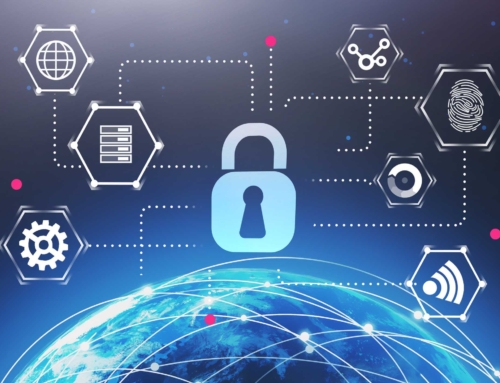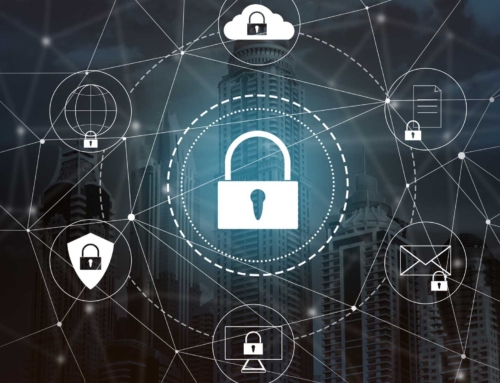Analyzing the Lifecycle of a Ransomware Attack
Understanding Ransomware: A Precursor to Its Lifecycle Analysis
At its core, ransomware is a type of malicious software designed to block access to a computer system until a sum of money is paid. For businesses and organizations, comprehending the ins and outs of ransomware is not just a matter of technicality but a critical aspect of operational resilience. As IT management and network services experts, we recognize the heightened prevalence of ransomware and its potential to wreak havoc on unprepared systems. By grasping the nuances of its lifecycle, we equip ourselves with the knowledge to develop robust defenses and advise on the strategic protection of digital assets.
Diving into Ransomware Attack Lifecycle Analysis
Ransomware attack lifecycle analysis is a methodical approach that helps us dissect and understand ransomware intrusions from inception to resolution. This strategic assessment is pivotal in pinpointing weaknesses within an organization’s cyber defenses and bolsters our ability to orchestrate effective countermeasures. In this line of defense, our focus as cybersecurity professionals extends well beyond mere detection. We engage in proactive monitoring and the fortification of network infrastructure to prevent the occurrence of these digital threats.
Ransomware Preparedness: The Role of Advanced Network Management
Preparation against ransomware is a multifaceted endeavor that hinges profoundly on advanced network management and IT management solutions. By instituting a robust framework of network services, we engineer a digital ecosystem that supports early threat detection, rapid response, and resilient recovery mechanisms. Advancements in network services, such as real-time monitoring, automated alerts, and predictive analytics, emerge as instrumental in navigating the menacing landscape of cyber extortion. Our adeptness in managing and finessing these tools reflects in our capacity to uphold the security of our clients’ networks, epitomizing our commitment to safeguarding their operational continuity against the surge of ransomware attacks.
Initial Compromise: The Entry Point of a Ransomware Attack
In the intricate choreography of a ransomware attack, the initial compromise stands out as the critical first movement. It’s the moment when a cyber adversary successfully breaches a network, laying the groundwork for havoc. Our in-depth ransomware attack lifecycle analysis begins with scrutinizing this pivotal phase because it’s here that our advanced network services and IT management can establish robust defenses to protect your organization’s sensitive data.
Identifying Network Vulnerabilities
We initiate by meticulously scanning for network vulnerabilities that could potentially serve as an entry point for ransomware. Channels such as phishing emails, unpatched software, or compromised credentials are assessed, focusing on the weakest links that demand immediate attention. Through this proactive stance, we aim not only to patch and fortify but also to anticipate and preempt possible breach methods.
Monitoring User Activities and Endpoint Security
Critical to halting an initial compromise in its tracks is continuous monitoring of user activities and endpoint security. By employing sophisticated IT management solutions, we keep a vigilant eye on potential abnormal behaviors that may signal an intrusion. This vigilant surveillance encompasses the detection of anomalous login attempts and the execution of unauthorized applications, therefore significantly narrowing the threat landscape.
- Implementing multi-factor authentication to enhance user verification processes.
- Applying the principle of least privilege to minimize user access risks.
- Deploying advanced endpoint detection and response (EDR) systems for real-time threat recognition.
Employing Advanced Threat Intelligence Services
Beyond guarding the gates, our approach incorporates advanced threat intelligence services. We leverage up-to-the-minute insights, correlating data globally to predict and combat ransomware tactics that are currently evolving. This forward-thinking strategy enables us to tailor defenses that are not only reactive but also inherently adaptive to shifting cybercriminal methodologies.
Our ransomware attack lifecycle analysis consistently reveals that the initial compromise isn’t merely about an immediate breach. It’s a test of the organizational defenses in place. Hence, we ensure that our network services are always tuned to the highest standards of cyber resilience. Whether it’s ensuring software is up-to-date or instigating rigorous staff training programs, our goal is to establish and maintain a posture of readiness against these insidious threats.
By dissecting and understanding each phase of the ransomware attack lifecycle, especially the initial compromise, we’re more equipped to formulate and implement a defense mechanism that is robust, agile, and unforgiving to unwarranted intrusions. Thus, we not only protect your critical digital assets but also instill peace of mind, knowing that your infrastructure is under the vigilant guard of industry-leading network services and IT management.
Did you know that many ransomware attacks start with a simple phishing email? Initial vigilance can prevent complex IT security issues.
Reinforcing Cybersecurity through Ransomware Attack Lifecycle Comprehension
As we’ve explored the myriad stages of a ransomware attack, it’s clear that understanding the intricacies of the ransomware attack lifecycle analysis is crucial. Such comprehension fosters informed decisions, enabling you to fortify your network against these pervasive threats effectively. Remember, ransomware doesn’t just impact systems; it disrupts businesses, reputations, and lives. Therefore, proactively managing your network’s security posture isn’t just a task—it’s a fundamental business imperative.
Final Insights: Enhancing Ransomware Defense through Strategic Network Management
At Alvaka, we believe that the battle against ransomware is continuous, demanding both vigilance and innovation. Regular security assessments and continuous monitoring are vital components of our service offerings, helping to safeguard your digital assets. Through comprehensive ransomware attack lifecycle analysis, we identify vulnerabilities before they are exploited, ensuring your peace of mind and operational continuity.
Future-Proofing Strategies: The Importance of Proactive IT Frameworks
Looking into the future, it’s essential for businesses to eschew reactive measures in favor of proactive IT management. Investing in advanced network services isn’t merely about defusing immediate threats; it’s about establishing a culture of security resilience that can adapt to evolving ransomware tactics. By partnering with Alvaka, you’re not just enlisting expertise; you’re embracing a collaborative process to enhance your organizational defenses.
In closing, we reiterate the importance of vigilance, preparedness, and strategic response in the face of ransomware threats. Our team is committed to delivering the highest caliber of IT management to bolster your cybersecurity posture. Should you ever face a ransomware incident, remember that efficient ransomware recovery is within reach when you have the right partners beside you. Together, we can navigate the complexities of the digital landscape and emerge stronger. Let’s continue to stay one step ahead in this cyber arms race, leveraging ransomware attack lifecycle analysis as our guide.
FAQ
What exactly is ransomware? ▼
Ransomware is a type of malware that encrypts a victim’s files or locks them out of their system, making demands for payment in exchange for the decryption key or to regain access. Understanding this malicious software is crucial to devising effective defense strategies in our IT management and network services.
How does the lifecycle of a ransomware attack unfold? ▼
The lifecycle of a ransomware attack typically involves several stages: initial compromise, execution, establishment of persistence, encryption, and the ransom demand. Analyzing each phase allows us to identify potential vulnerabilities and improve our incident response protocols.
Why is it important to understand the lifecycle of a ransomware attack? ▼
Comprehending the lifecycle of a ransomware attack empowers us to anticipate attackers’ moves, strengthen our network’s defenses, and significantly reduce the risk of succumbing to such threats.
How can advanced network services help prevent ransomware attacks? ▼
Advanced network services can implement proactive monitoring, threat detection, and automated response mechanisms. In addition, they often include comprehensive backup solutions to ensure business continuity in the event of an attack.
What is the first step in a ransomware attack? ▼
The initial compromise is typically the first step, where attackers exploit vulnerabilities to gain unauthorized access to a network. It is a critical point at which our network services can intervene to prevent further damage.
How does IT management contribute to ransomware defense? ▼
IT management includes planning, implementing, and maintaining robust security protocols, regular software updates, and employee education, all of which are fundamental components in constructing a solid defense against ransomware.
Can you give examples of how IT management services have stopped ransomware? ▼
Certainly. There have been cases where IT management services detected suspicious activities early and isolated infected systems, preventing the spread of ransomware. Additionally, by maintaining updated and patched systems, they have removed potential entry points for ransomware attackers.
What role does employee education play in preventing ransomware? ▼
Employee education is paramount, as human error often leads to successful ransomware attacks. Through education, employees learn to recognize phishing attempts, practice safe browsing habits, and understand the importance of reporting suspicious activities promptly.
Is it possible to recover from a ransomware attack without paying the ransom? ▼
Yes, with the right network services and backups in place, it is possible to restore encrypted files and systems without giving in to the attackers’ demands. Our preparedness and resilience can make the difference when faced with such a crisis.
How does ransomware encryption work, and why is it so effective? ▼
Ransomware encryption involves using powerful algorithms to lock data so that it cannot be accessed without the corresponding decryption key. This process is effective because, without the key, it is almost impossible to decrypt files, forcing many victims to consider paying the ransom to restore their data and services.








 Smoke testing is a term used to describe the testing process for servers after patches are applied.
Smoke testing is a term used to describe the testing process for servers after patches are applied.  This is a basic cost calculator for you to compute your typical monthly cost for patching your servers, PCs, laptops, tablets and associated application software. It also forms the basis for you to begin calculating your Return on Investment for software patching, or for comparison with alternatives to the manual process of patching operating systems and application software—such as Patch Management as a Service, also known as Vulnerability Management as a Service.
This is a basic cost calculator for you to compute your typical monthly cost for patching your servers, PCs, laptops, tablets and associated application software. It also forms the basis for you to begin calculating your Return on Investment for software patching, or for comparison with alternatives to the manual process of patching operating systems and application software—such as Patch Management as a Service, also known as Vulnerability Management as a Service.